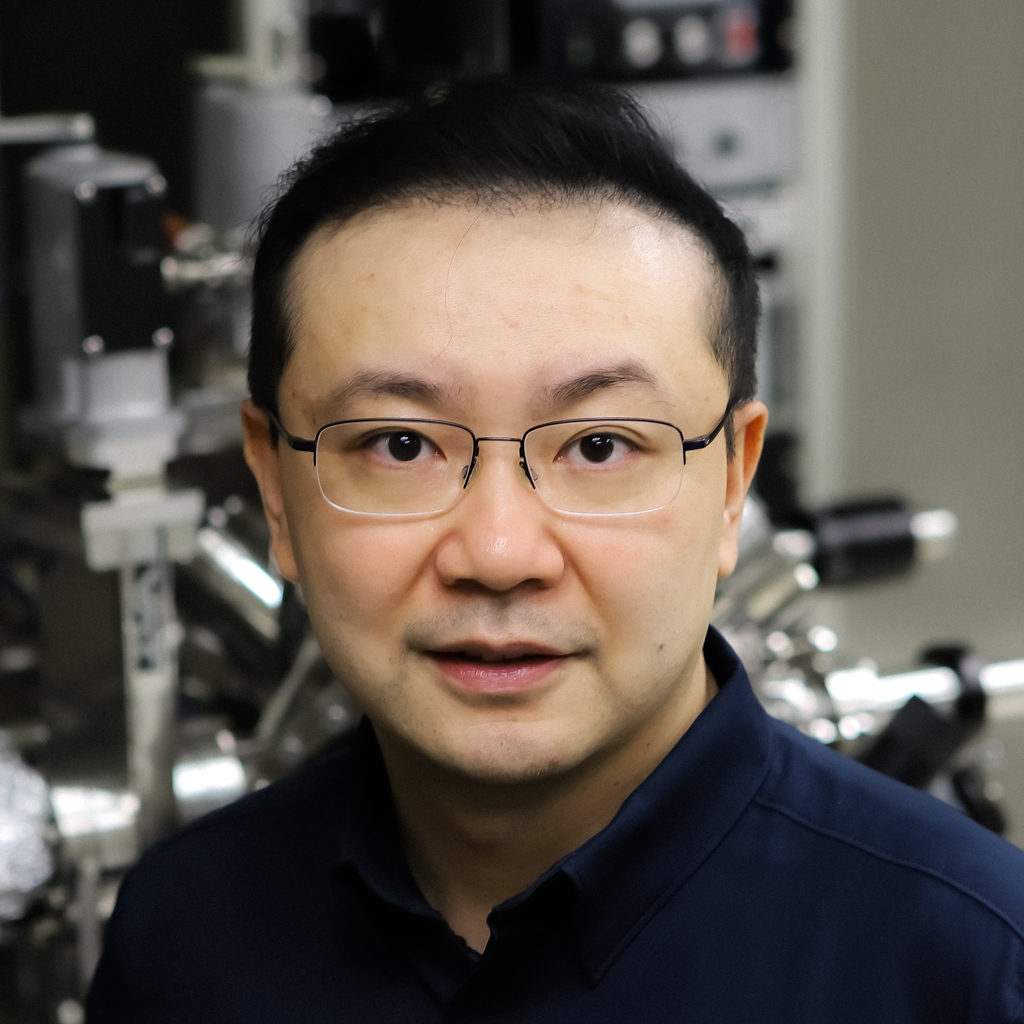Archive for the ‘EMI’ Category
15 Sep 2023

Emerging Investigator: Gengtao Fu
 |
|
Position Professor
Postdoc 2019–2021 The University of Texas at Austin (USA)
2017–2019 Nanyang Technological University (Singapore)
Education 2014–2017 Nanjing Normal University Ph.D.
2011–2014 Nanjing Normal University M.Sc.
ORCID 0000-0003-0411-645X Google Scholar
|
Read Gengtao Fu’s Emerging Investigator Series article in Materials Chemistry Frontiers and learn more about him.
| |
|
|
| |
Universal synthesis of rare earth-doped FeP nanorod arrays for the hydrogen evolution reaction |
|
| |
Minnan Chen, Zijing Lin, Yi Ren, Xuan Wang, Meng Li, Dongmei Sun,* Yawen Tang * and Gengtao Fu * |
|
|
|
A universal plasma-assisted strategy is proposed for the fabrication of rare earth-doped FeP as a kind of potential electrocatalyst for the hydrogen evolution reaction.
|
|
|
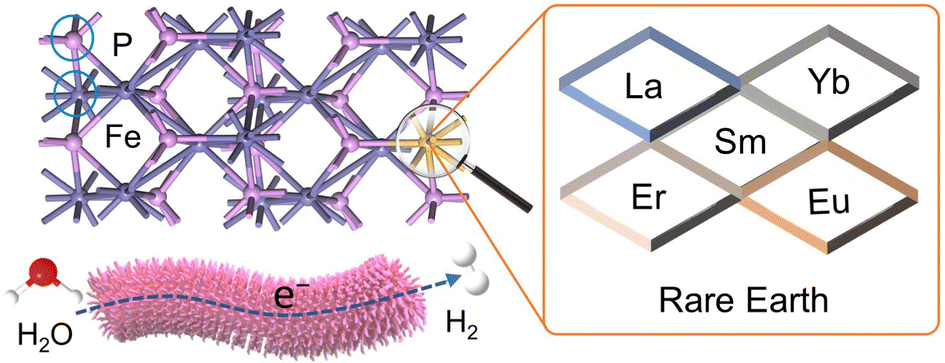 |
|
| |
From the themed collection: Frontiers Emerging Investigator Series |
|
| |
The article was first published on 06 Jul 2023 |
|
| |
Mater. Chem. Front., 2023, 7, 4132-4141 |
|
| |
https://doi.org/10.1039/D3QM00516J |
|
| |
|
|
My research interests
| Key words: energy storage and conversion, electrocatalysis, rare-earth functional materials, catalytic mechanism |
| My research interests focus on the rational design and the synthesis of advanced rare-earth functional materials for electrocatalysis, electrochemical energy storage, and conversion. Particularly, I have made great efforts in solving the difficult doping of rare earth elements uniformly in transition metals, ambiguous catalytic mechanisms, and undefined structure-activity relationships, to gradually realize the industrialization and marketization of rare-earth-doped transition metal electrocatalysts in energy conversion devices, such as fuel cells and rechargeable batteries. |
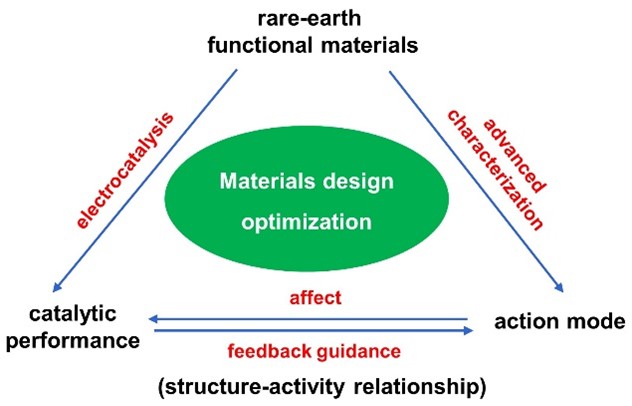 |
10 Facts about me
| I published my first academic article on the synthesis and catalytic properties of porous palladium nanospheres in Journal of Materials Chemistry in 2012.
An accomplishment I’m particularly proud of is the pioneering work on identifying the active sites of rare-earth-based transition metal oxides towards electrocatalytic oxygen evolution, published in Advanced Materials, 2023.
The person who has had the greatest influence on my research career is my postdoctoral supervisor Prof. John B. Goodenough at The University of Texas at Austin.
I always feel lucky that my Ph.D. and M.S. advisors directed me to the cutting-edge research fields.
I received the first funding from the National Natural Science Foundation of China in 2021.
Good work depends not only on good ideas and results but also on great writing and logic skills.
I advise my students to develop abilities including diligence, strong will, and thinking independently, which are crucial to success in their beginning research career.
A recent epiphany: where there is a will there is a way.
It is my favorite time when I travel with my wife and lovely son. |
Click to find out our Emerging Investigators and their work
Comments Off on Emerging Investigator: Gengtao Fu at Nanjing Normal University
15 Sep 2023

Emerging Investigator: Yu Zhou
Read Yu Zhou’s Emerging Investigator Series article in Materials Chemistry Frontiers and learn more about him.
| |
|
|
| |
Ionic polyamide boosting Ru efficiency in reductive amination of carbonyl compounds |
|
| |
Qizhi Hu, Hongzhong Xu, Yue Wu, Shi Jiang,* Jun Wang* and Yu Zhou* |
|
|
|
Ionic polyamide-stabilized ruthenium nanoparticles for ultra-efficient reductive amination of carbonyl compounds to primary amines with NH3 and H2.
|
|
|
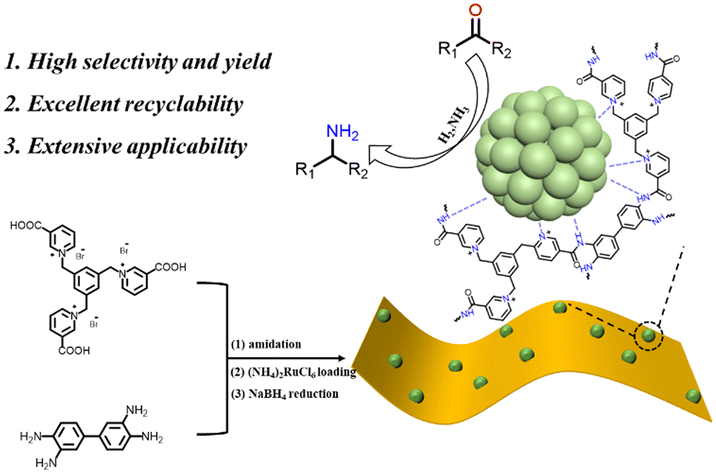 |
|
| |
From the themed collection: Frontiers Emerging Investigator Series |
|
| |
The article was first published on 19 Mar 2023 |
|
| |
Mater. Chem. Front., 2023, 7, 2266-2276 |
|
| |
https://doi.org/10.1039/D2QM01234K |
|
| |
|
|
My research interests
| Key words: zeolite molecular sieves, ionic liquid-derived materials, heterogeneous catalysis, adsorption and separation, CO2 capture and conversion |
| Our research interests focus on the development of functional zeolite molecular sieves and their application in adsorption, separation and catalysis. We developed a unique acid co-hydrolysis route for the synthesis of metal-doped zeolites with varied topology, Si/Al molar ratio and different kinds of metal species such as single atoms, clusters, and nanoparticles. We developed various new synthetic routes for the construction of porous poly(ionic liquid)s, ionic metal–organic frameworks (MOFs), and ionic covalent organic frameworks (COFs). In addition, we evaluated the performance of these molecular sieves in CO2 capture and conversion, gas separation, biomass conversion, acid-base catalysis, oxidation and hydrogenation reactions, and photo-electrocatalysis. |
|
10 Facts about me
| I published my first academic article in Chem. Eur. J. in 2009.
The most important academic article that I published was in Science in 2021.
I received the first funding from the National Natural Science Foundation of China in 2013.
My favourite sport is swimming.
I enjoy thinking freely.
One of my favourite activities is playing with my kids.
One of my hidden talents is my patience.
One thing I cannot live without is hope.
An accomplishment I’m particularly proud of is that I have two daughters.
I am most passionate about my work in exploring a new research field because it is full of unknowns, fulfilling my curiosity. |
Click to find out our Emerging Investigators and their work
Comments Off on Emerging Investigator: Yu Zhou at Nanjing Tech University
24 Apr 2023

Emerging Investigator: Jianyu Yuan
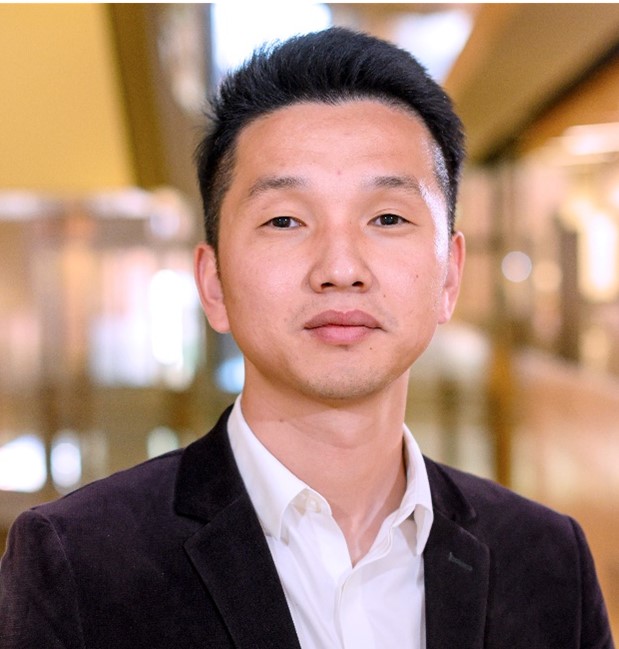 |
|
Position Professor
Education 2011–2016 Soochow University Ph.D.
|
Read Jianyu Yuan’s Emerging Investigator Series article in Materials Chemistry Frontiers and learn more about him.
| |
|
|
| |
Efficient and stable hybrid conjugated polymer/perovskite quantum dot solar cells |
|
| |
Hehe Huang, Xuliang Zhang, Chenyu Zhao and Jianyu Yuan * |
|
|
|
Emerging lead halide perovskite quantum dots (QDs) have attracted great research interest relative to conventional metal chalcogenide-based QDs for applications like solar cells.
|
|
|
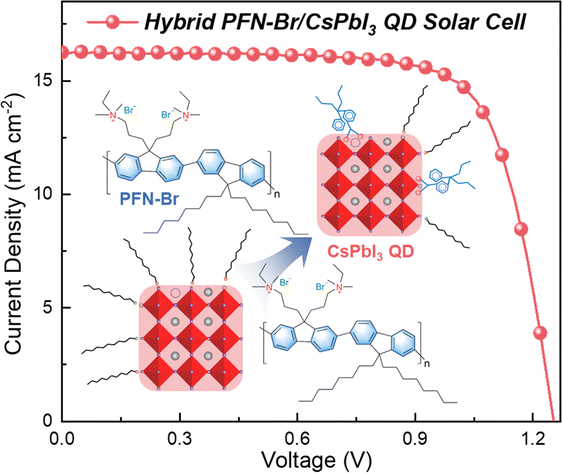 |
|
| |
From the themed collection: Frontiers Emerging Investigator Series |
|
| |
The article was first published on 09 Feb 2023 |
|
| |
Mater. Chem. Front., 2023, 7, 1423-1430 |
|
| |
https://doi.org/10.1039/D3QM00015J |
|
| |
|
|
My research interests
| Key words: conjugated polymers, inorganic nanocrystals, organic–inorganic hybrid nanomaterials, solar cells |
| My research interests currently center on the molecular design and synthesis of innovative, functional organic and inorganic nanomaterials for applications in photovoltaics. The main research direction in our group is to develop novel organic conjugated polymers, colloidal nanocrystals with tunable features, and to understand the impact of their structure, the surface chemistry environment as well as the aggregation state in the solid film on the relevant photovoltaic performance. Particularly, we strive to explore more efficient hybrid nanomaterials systems, aiming to overcome the limit in materials synthesis, processing, and device fabrication in individual systems, and to further provide a suitable platform for accelerating next-generation solar cells to solve the big energy challenges. |
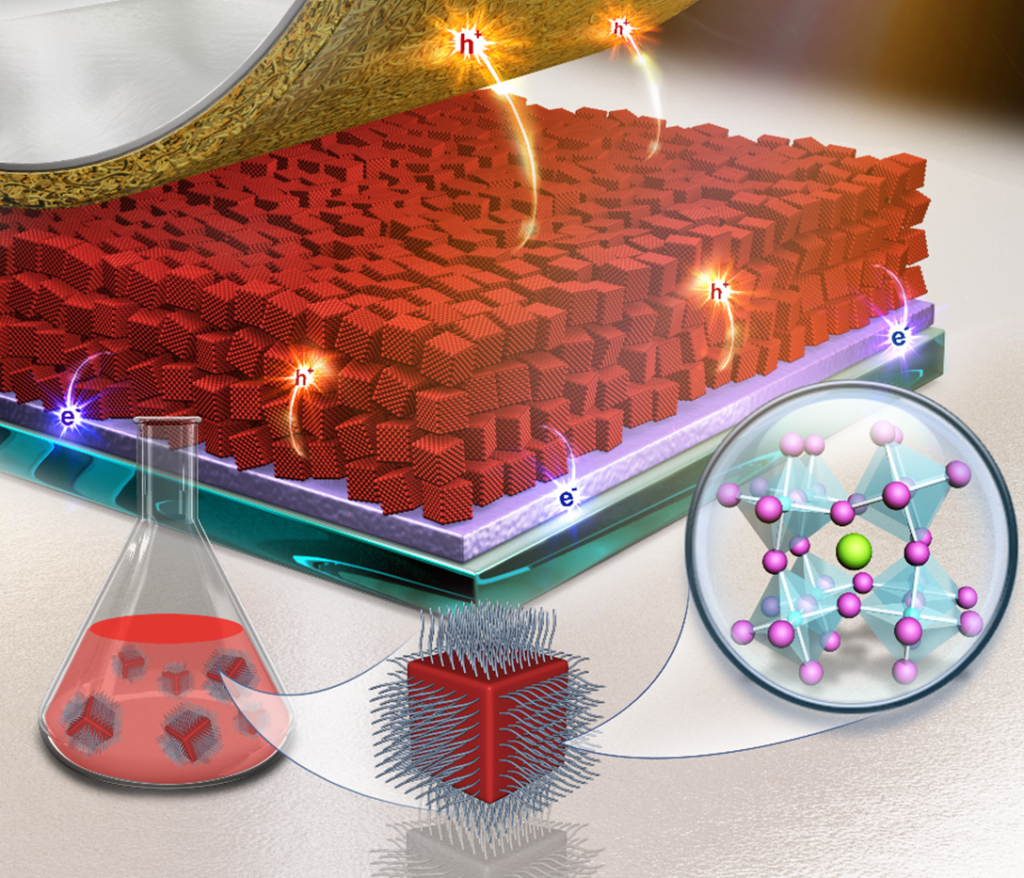 |
10 Facts about me
| I chose my current job because I enjoy every part of my current position.
I published my first academic article on the design and the synthesis of three new wide-bandgap conjugated polymers for efficient organic solar cells with a record-high open circuit voltage over 1 volt in Adv. Funct. Mater. back in 2012.
An accomplishment I’m particularly proud of is being hand in hand with my first love for over 15 years and building our warm family with a lovely daughter.
I am most passionate about my work in training young students because it is the core issue of education.
The most challenging part of my job is teaching students efficiently in accordance with their aptitude.
My favourite clothing brand is Arc’teryx, an outdoor brand utilizing the most advanced and functional materials for clothing design.
If I were not a scientist, I would bea sports player, dreaming to be drafted by the professional leagues.
One thing I cannot live without is my family, since home is a warm harbour.
The most important thing I learnt is that hard work pays off.
I advise my students to make their research work meaningful, useful and impactful. |
Click to find out our Emerging Investigators and their work
Comments Off on Emerging Investigator: Jianyu Yuan at Soochow University, China
27 Mar 2023

Emerging Investigator: Haoke Zhang
Read Haoke Zhang’s Emerging Investigator Series article in Materials Chemistry Frontiers and learn more about him.
| |
|
|
| |
In situ monitoring of protein aggregation via clusteroluminescence |
|
| |
Zhiming Zhang,‡ Longchen Zhu,‡ Jiahui Feng,‡ Haoke Zhang,* Xin Zhang,* Jing Zhi Sun* and Ben Zhong Tang* |
|
|
|
The protein aggregation is successfully monitored using the intrinsic abnormal visible emission at the clustering state, namely clusteroluminescence (CL).
|
|
|
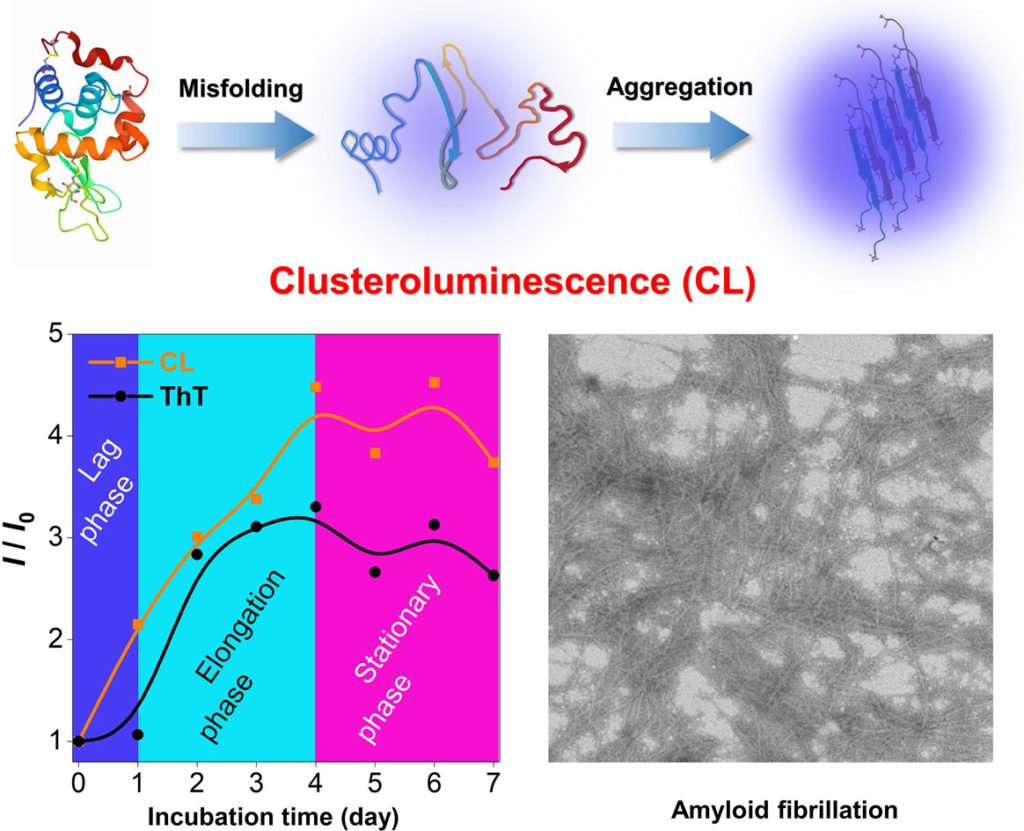 |
|
| |
From the themed collection: Frontiers Emerging Investigator Series |
|
| |
The article was first published on 30 Dec 2022 |
|
| |
Mater. Chem. Front., 2023, 7, 713-719 |
|
| |
https://doi.org/10.1039/D2QM01032A |
|
| |
|
|
My research interests
| Key words: through-space interactions, clusteroluminescence, aggregation-induced emission |
| My research interests focus on the mechanistic study of clusteroluminescence (CL) which is the nonconventional luminescence at the clustering state from non-conjugated structures, with the goal of systematically studying the aggregate photophysics based on through-space interactions. Based on the new theories, we are committed to designing high-efficiency and long-wavelength luminogens with CL properties and developing their biological applications, such as bio-imaging and monitoring of biological processes. |
|
10 Facts about me
| I published my first academic article in J. Mater. Chem. C., published by the RSC.
An accomplishment I’m particularly proud of is having organized the 1st International Conference on Clusteroluminescence (ICC).
I am most passionate about my work in developing novel materials because I can create new things from nothing.
One of my dreams is to pursue pure and free academic research without external “noise”.
The motivation for my academic career is an irreparable Walkman in my childhood.
My favourite sport is swimming.
My favourite book is Ordinary World.
If I were not a scientist, I would be an aerospace engineer.
If I have a half-year holiday, I will go on a self-drive tour through Xinjiang and Tibet with my family.
The most important thing I learnt is self-discipline. |
Click to find out our Emerging Investigators and their work
Comments Off on Emerging Investigator: Haoke Zhang at Zhejiang University, China
27 Mar 2023

Emerging Investigator: Xiaogang Liu
Read Xiaogang Liu’s Emerging Investigator Series article in Materials Chemistry Frontiers and learn more about him.
| |
|
|
| |
The fluorescence quenching mechanism of tetrazine-functionalized fluorogenic labels with integrated π-conjugations: internal conversion to a dark state |
|
| |
Tianruo Shen, Wenda Zhang, Priya Yadav, Xiao Wei Sun and Xiaogang Liu* |
|
|
|
We formalized a unique working mechanism – internal conversion to a dark state (ICDS) to rationalize the fluorogenicity of the tetrazine-fused fluorophores with integrated π-conjugations.
|
|
|
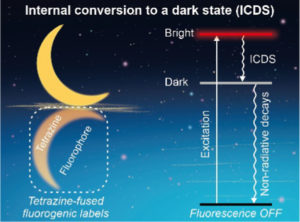 |
|
| |
From the themed collection: Frontiers Emerging Investigator Series |
|
| |
The article was first published on 19 Jan 2023 |
|
| |
Mater. Chem. Front., 2023, 7, 1082-1092 |
|
| |
https://doi.org/10.1039/D2QM01264B |
|
| |
|
|
My research interests
| Key words: dye chemistry, photochemistry, computational chemistry, fluorophores, fluorescent probes |
| We conduct both computational and experimental studies on fluorescent dyes and sensors. We use both “bottom-up” and “top-down” approaches to systematically summarize molecular design rules. In the “bottom-up” approach, we employ quantum chemical calculations and experimental characterizations to understand the molecular origins of a particular dye, before generalizing such knowledge to a wide range of compounds. In the “top-down” approach, we perform “data mining” in chemical databases and search patterns between molecular structures and their properties; subsequently, we validate these patterns using quantum chemical calculations, and thereby generate molecular design rules.
These rational molecular design rules enable us to develop novel fluorescent dyes and sensors with enhanced performance. A deep understanding of the structure–property relationships of fluorophores also permits us to reveal the photophysics and photochemistry of various fluorescent compounds.
Our research vision is to shift the chemistry of fluorophores from “trial-and-error” to molecular engineering, such that one gains the ultimate abilities to “design” tailored fluorescent properties to suit a given application. |
|
10 Facts about me
| An accomplishment I’m particularly proud of is the discovery of a new charge transfer mechanism (twisted intramolecular charge shuttle).
I am most passionate about my work in understanding the working mechanism of fluorescent compounds because it is fascinating to play with light at the molecular scale.
I published my first academic article on the invisibility cloak in 2010, as a research engineer. It teaches me the importance of teamwork. I have since switched my research directions several times, for curiosity and fun!
My biggest motivation to do research is to uncover the secrets of the natural world.
I advise my students to be critical about any views in the pursuit of science, including those from me.
If I were not a scientist, I would be a teacher. I enjoy teaching and interacting with students.
My passion besides work is reading and travel.
My favorite time of day is early morning at home, with the sunrise and music.
One thing I cannot live without is my family.
The most important thing I learned from my parents is caring for others. |
Click to find out our Emerging Investigators and their work
Comments Off on Emerging Investigator: Xiaogang Liu at Singapore University of Technology and Design
27 Mar 2023

Emerging Investigator: Nan Jiang
Read Nan Jiang’s Emerging Investigator Series article in Materials Chemistry Frontiers and learn more about him.
| |
|
|
| |
The selective blocking of potentially catalytically active sites on surface-supported iron oxide catalysts |
|
| |
Dairong Liu, Linfei Li, Buddhika S. A. Gedara, Michael Trenary and Nan Jiang* |
|
|
|
Selective growth of Pd and Pt on the edges of Au(111) supported FeO islands was observed. The complicated interfaces formed in selective growth raise a platform for the research of edge involved catalytic reactions.
|
|
|
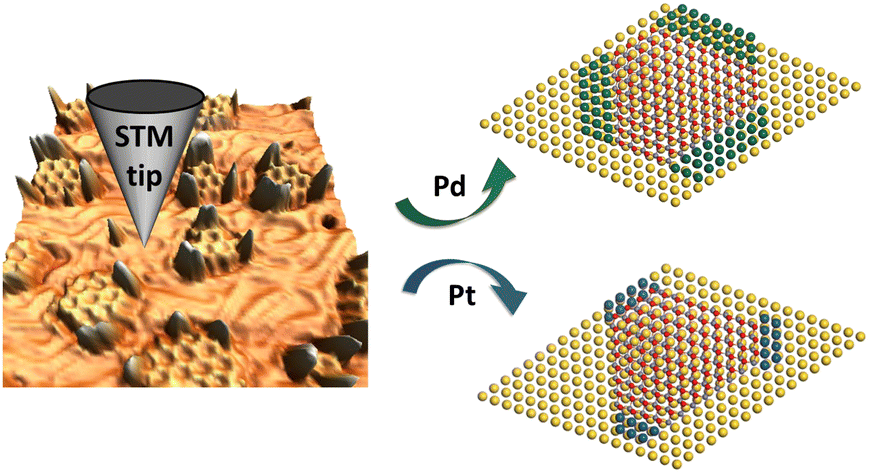 |
|
| |
From the themed collection: Frontiers Emerging Investigator Series |
|
| |
The article was first published on 23 Dec 2022 |
|
| |
Mater. Chem. Front., 2023, 7, 476-482 |
|
| |
https://doi.org/10.1039/D2QM01025A |
|
| |
|
|
My research interests
| Key words: scanning probe microscope, Raman spectroscopy, tip-enhanced Raman spectroscopy, nanoscience, nanomaterials |
The goals of my research group are to develop and apply scanning probe-based nanotechnology, including scanning tunneling microscopy (STM) and tip-enhanced Raman spectroscopy (TERS) to provide angstrom-scale mechanistic insights for complex chemical systems. My research is at the interface of Chemistry and Materials Science and provides the needed information about environmental heterogeneity in complex chemical systems such as nanostructures on metal surfaces and the surfaces of two-dimensional (2D) materials. My group is uniquely positioned to characterize these systems both spatially and chemically using STM and TERS. With the optical set-up which I designed, my group is now able to: (1) observe weak vibrational modes that would be lost with less sensitive Raman techniques, (2) improve the signal-to-noise ratio for TERS to investigate subtle changes in molecular binding at the atomic level, and (3) achieve spatial resolution of TERS below 1 nm. These findings will guide the rational design of nanoscale systems.
|
|
10 Facts about me
| I published my first academic article as an undergraduate research assistant at the University of Science and Technology of China.
An accomplishment I’m particularly proud of is developing a hybrid technique by combining scanning probe microscopy with optical spectroscopy to understand and predict the single-molecule processes at the angstrom scale.
I am most passionate about my work in pushing the spatial limit of chemical imaging because single-bond chemistry can be ultimately observed.
I have the highest respect for Prof. Richard P. Van Duyne. He was a role model and leader who asked hard questions and provided enthusiastic suggestions for paths forward while also appreciating each student or postdoc for who they were. Although Prof. Van Duyne passed away in 2019, his legacy lives on in the minds he molded where his passion for science lives on.
My favourite thing to do outside of work is traveling. I can explore the unknown world and learn more.
I chose chemistry as a career because chemistry can create new things.
A key experience in my education was having done multiple-major studies in multiple countries.
The biggest challenge for me is to convince others to believe in my crazy scientific proposals.
One thing that can make me happy for sure is visiting a new country (maybe a new planet in the future).
I advise my students to be valuable men, which is more important than just being successful men. |
Click to find out our Emerging Investigators and their work
Comments Off on Emerging Investigator: Nan Jiang at the University of Illinois Chicago, USA
17 Feb 2023

Emerging Investigator: Jie Yang
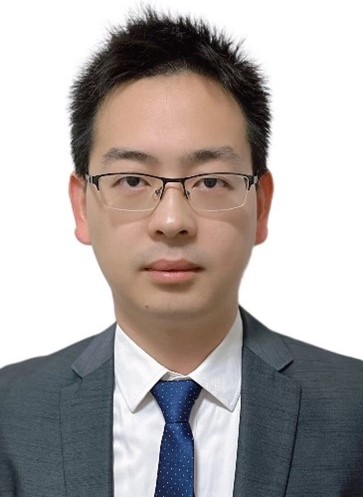 |
|
Position Associate Professor
Education 2013–2018 Wuhan University Ph.D.
2009–2013 Wuhan University B.Sc.
ORCID 0000-0001-9433-3444
|
Read Jie Yang’s Emerging Investigator Series article in Materials Chemistry Frontiers and learn more about him.
| |
|
|
| |
Exciplex-induced TADF, persistent RTP and ML in a host–guest doping system |
|
| |
Yunsheng Wang, Mingxue Gao, Jia Ren, Jiayi Liang, Yao Zhao, Manman Fang, Jie Yang* and Zhen Li* |
|
|
|
A universal exciplex platform was reported to construct multifunctional luminescent materials, including thermally-activated delayed fluorescence (TADF), persistent room temperature phosphorescence (RTP) and mechanoluminescence (ML).
|
|
|
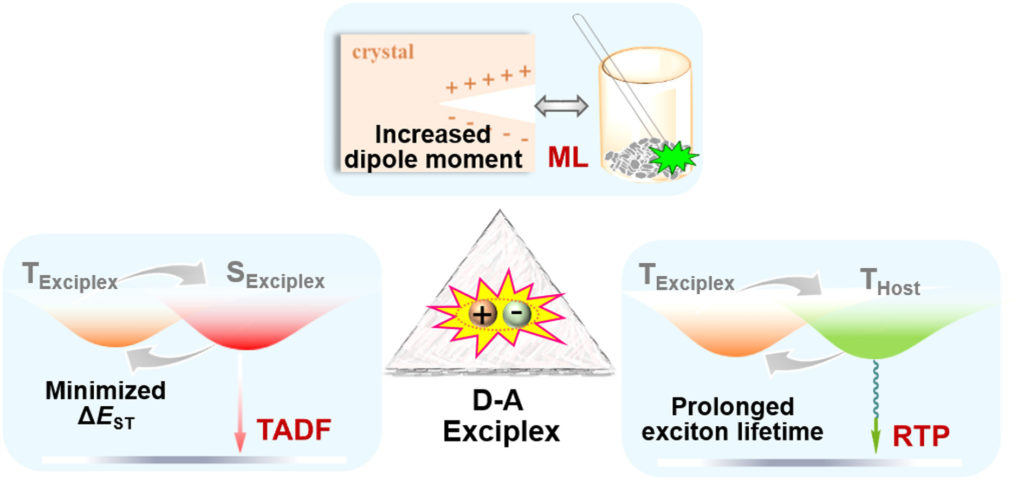 |
|
| |
From the themed collection: Frontiers Emerging Investigator Series |
|
| |
The article was first published on 26 Jan 2023 |
|
| |
Mater. Chem. Front., 2023, Advance Article |
|
| |
https://doi.org/10.1039/D2QM01205G |
|
| |
|
|
My research interests
| Key words: organic π-system; room temperature phosphorescence; aggregation-induced emission; mechanoluminescence |
| My research interests mainly focus on the development of new organic solid-state luminescent materials, including room temperature phosphorescence (RTP), aggregation-induced emission (AIE) and mechanoluminescence (ML), etc. Particularly, I am very interested in exploring the relationship between aggregation structure and the resultant luminescent behaviors through regulation of organic π-systems. The deep understanding of structure–property relationship can well guide the design of luminescent materials with improved performance, thus to meet the requirements of practical applications. |
|
10 Facts about me
| I chose my current career path because I can constantly discover new things and create new knowledge.
I am interested in luminescent materials because they are so beautiful in the dark.
I published my first academic article in J. Mater. Chem. C in 2015, which is about the design of blue AIE luminogens and their application in OLEDs.
The goal of my research is to develop new materials that can be used in daily life.
I am most passionate about my work in organic room temperature phosphorescence because this in itself is an anomaly which easily arouses my curiosity.
In my spare time, I enjoy reading martial arts fiction.
My favourite thing is watching my little girl grow up happily.
I would like to share with my students: success comes from constant effort.
My most important role model is my advisor Prof. Zhen Li. His passion for scientific research has always impressed me and I learned a lot from him.
I always feel lucky to be able to do what I like with lovely people. |
Click to find out our Emerging Investigators and their work
Comments Off on Emerging Investigator: Jie Yang at Tianjin University, China
























